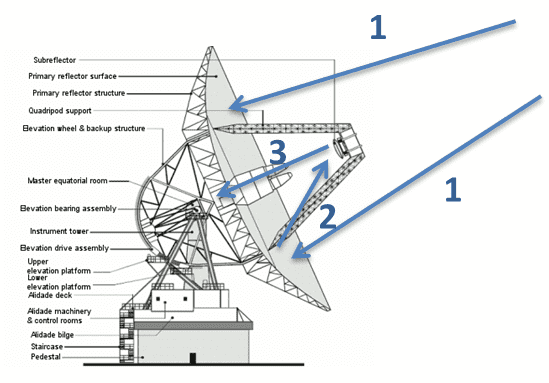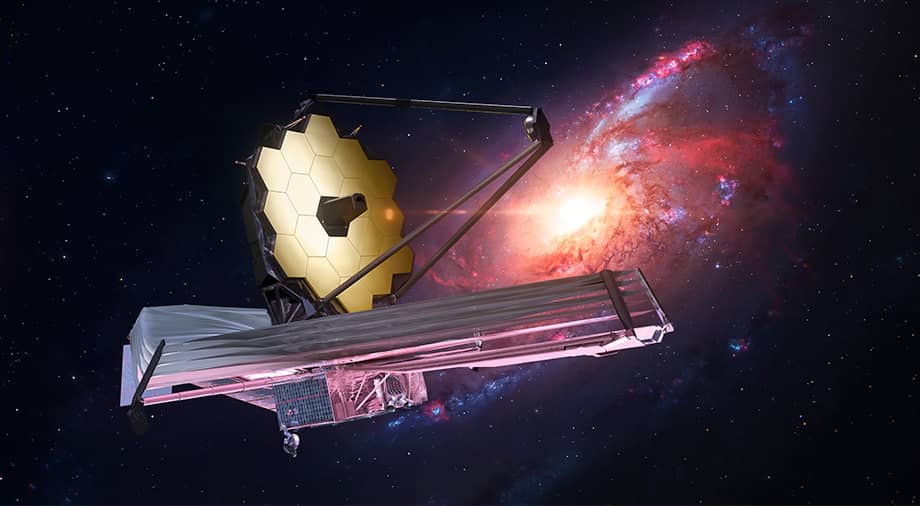This year marks the 45th anniversary of the two NASA spacecraft space voyages, Voyager 1 and Voyager 2, sent on an extended mission in 1977. The voyage’s main goal was to study the solar system’s planets in detail. Since the mission started, the two twin spacecraft have already managed to leave the limit of the Sun’s heliosphere known as the heliopause, the boundary region of our solar system. In heliopause, the frontal flow of solar wind flux is dispersed into the interstellar medium.

Voyager 1 recently began experiencing problems with its spatial orientation, which may be the first sign of the beginning of the end of one of the most ambitious space missions in history. We tried to figure out what happened to the spacecraft’s navigation, as well as looked at how exactly space communication works in Deep Space.
How does communication work on Voyager 1?
To better understand exactly how communication outside of the solar system works, we should first discuss the design features of Voyager 1’s radio reception equipment and the computer systems that serve it.
It is worth starting with AASC, which stands for the Articulation and Control Relationship System, designed to send data about Voyager’s position in space and its course of flight back to Earth. High-gain AASC antenna is permanently directed toward our planet to help amplify the weak wave signal emanating from the probe in space.
As Voyager’s signal strength gradually moves away from Earth, it continually decreases, causing the data rate from the probe to our planet to decrease. As of 2017, the probe’s signal strength was approximately -160.48 dBm, which is about 1,000 times weaker than the signal of a conventional FM receiver. Nevertheless, modern technology has significantly improved the sensitivity of the receiving antenna network. Even 44 years later, NASA can both pick up weak radio fluctuations coming from Voyager 1 and send it a response with a much higher signal strength from Earth.
Surprisingly, Voyager uses low-power radio receivers with a capacity of 23 watts to get the signal at such a long range. The receiving antenna on the spacecraft has a diameter of 3.7 meters, while the receiving antennas on Earth that form the Deep Space Network have a diameter of 34 and 70 meters.

When the signal reaches Earth (1), large parabolic reflectors (2) and hyperbolic auxiliary reflectors (3) pick up the microwave radiation and focus it on the cryogenically cooled receiver at the base of the antenna (4).
The centers for receiving signals from Voyagers located on Earth are located at an angle of 120° to each other to provide Voyager-1 coverage regardless of the Earth’s position in relation to it. Simply put – at any time of the day. Receiving stations for communication with the spacecraft are located in Australia (Deep Space Network station in Canberra), the US (station in Goldstone, California), and Spain (tracking station in Madrid).
The increased signal gain is achieved by capturing the signal from Voyager by several receiving stations on Earth simultaneously. The principle of Very Long Baseline Radio Interferometry (VLBI) is used to obtain more accurate data on the Voyager’s location by creating interferometric axes (or lines) between the two receiving stations. In addition, the Doppler Radio Direction Finder helps NASA specialists determine the exact location of Voyager.

To provide a stable level of communication at such a distance, the uplink carrier wave frequency should equal 2114 MHz. Reverse communication (from Earth to Voyager) occurs when Voyager receivers are synchronized with the frequency of the uplink carrier by phase. Then, the probe converts it into a two-way coherent downlink carrier signal and sends it back to Earth using transmitters operating in the X and S frequency bands.

Radioisotope thermoelectric generators power the AC source that feeds each subsystem. For the proper communication of the spacecraft with the Earth, the usage of radio frequencies with minimal technogenic interference is necessary.
What’s wrong?
On May 18, NASA admitted that the Voyager 1 spacecraft began experiencing problems determining its position in space. The telemetry data that the spacecraft was transmitting to Earth through its Articulation and Control Relationship System (AASC) had nothing to do with Voyager’s estimated trajectory and flight speed. The module started sending randomly generated spatial coordinates back to Earth, and NASA became seriously concerned.
Today, we know the failure that occurred in the AASC system did not provoke the transfer of the spacecraft to “safe mode.” Having entered this mode, Voyager would only perform basic functions, while NASA engineers would have had time to figure out exactly what happened to it.
The fact that Voyager 1 is still traveling along its initial path is indirectly indicated by the stability of the radio signal emitted by the probe. The spacecraft has not faded and is still operating at the specified operating frequencies. All this can indicate only one thing – the antennas of Voyager 1 are still pointed to Earth, which means that its course has not changed.
It is worth noting that the device is currently approximately 14.5 billion miles from Earth. Given the enormity of the distance, it takes more than 20 hours and 33 minutes for light to reach Voyager 1 from Earth, so the full cycle of signal reception-transmission takes almost two days. Currently, the apparatus continues to move away from the solar system at a speed of 48,280 km/h, constantly increasing the time required to communicate with it.

A short hyphen showing the spacecraft’s 45-year voyage
Susan Dodd, chief project manager for both Voyagers, was reticent about the situation, noting that at this stage of the mission, such issues are not surprising, as both Voyagers have long exceeded their operational lifespan. Dodd also added that the anomaly in the telemetry systems of Voyager 1 could have been caused by the constant impact of cosmic radiation on the probe.
However, the NASA team in charge of communications with Voyager 1 keeps a cool head. “I think that if there is a way to solve this problem with AACS, our team will find it,” Dodd notes. A possible solution could be changing the AASC software or restarting the entire space positioning system, using one of Voyager’s redundant hardware systems.
Despite the mystery of Voyager 1’s telemetry systems, NASA experts remain optimistic. They admit that even if the AASC system on Voyager-1 will not get back to the norm, the unit will still be able to operate only until 2025 when the radioisotope thermoelectric generators will exceed their useful life and no longer be able to generate enough electricity to operate the probe’s scientific equipment.
Nevertheless, both Voyagers and their crew have already done too much to become part of human history in space forever. We will discuss the results of each probe’s space missions in the other two articles in our triptych on the 45th anniversary of the Voyager space program.





